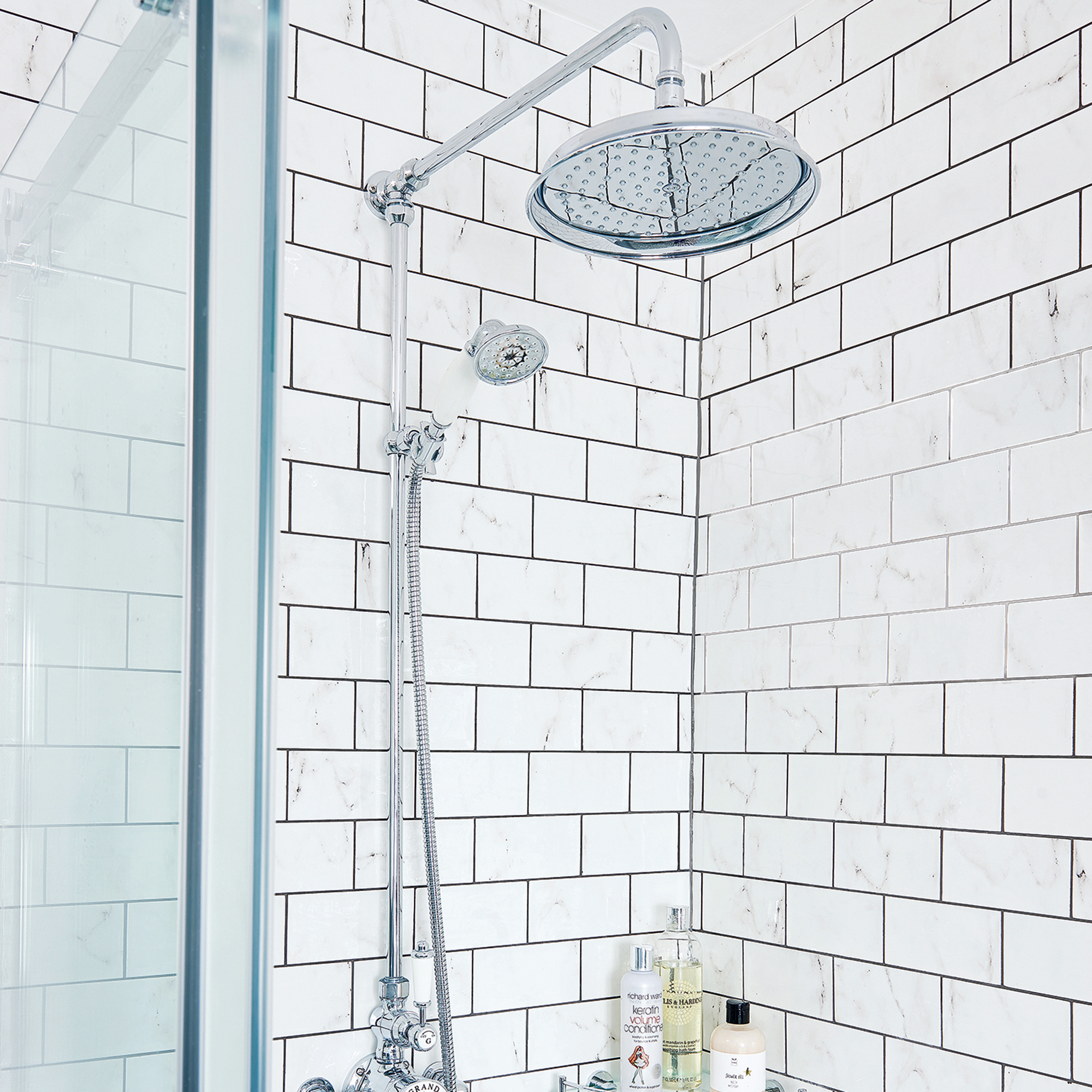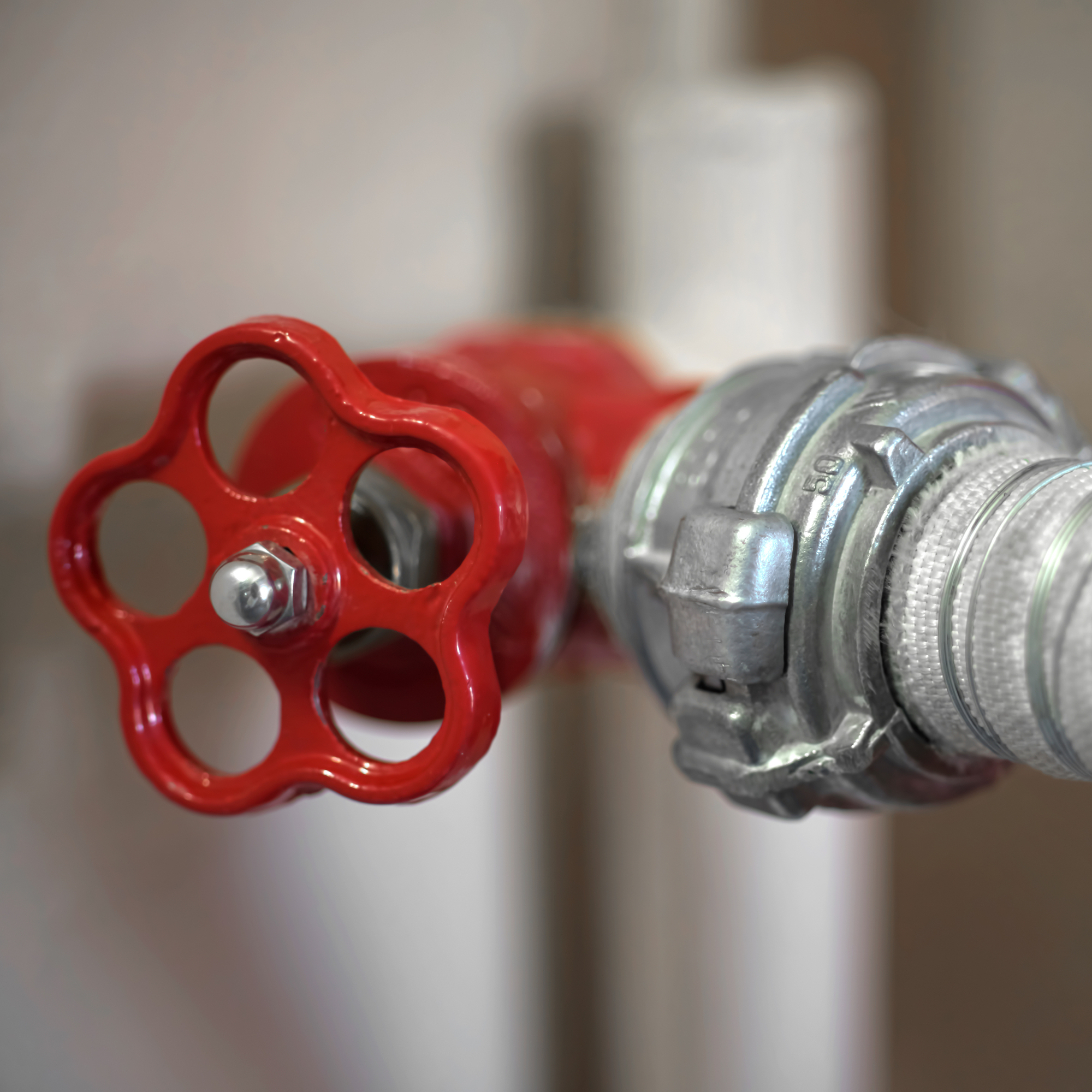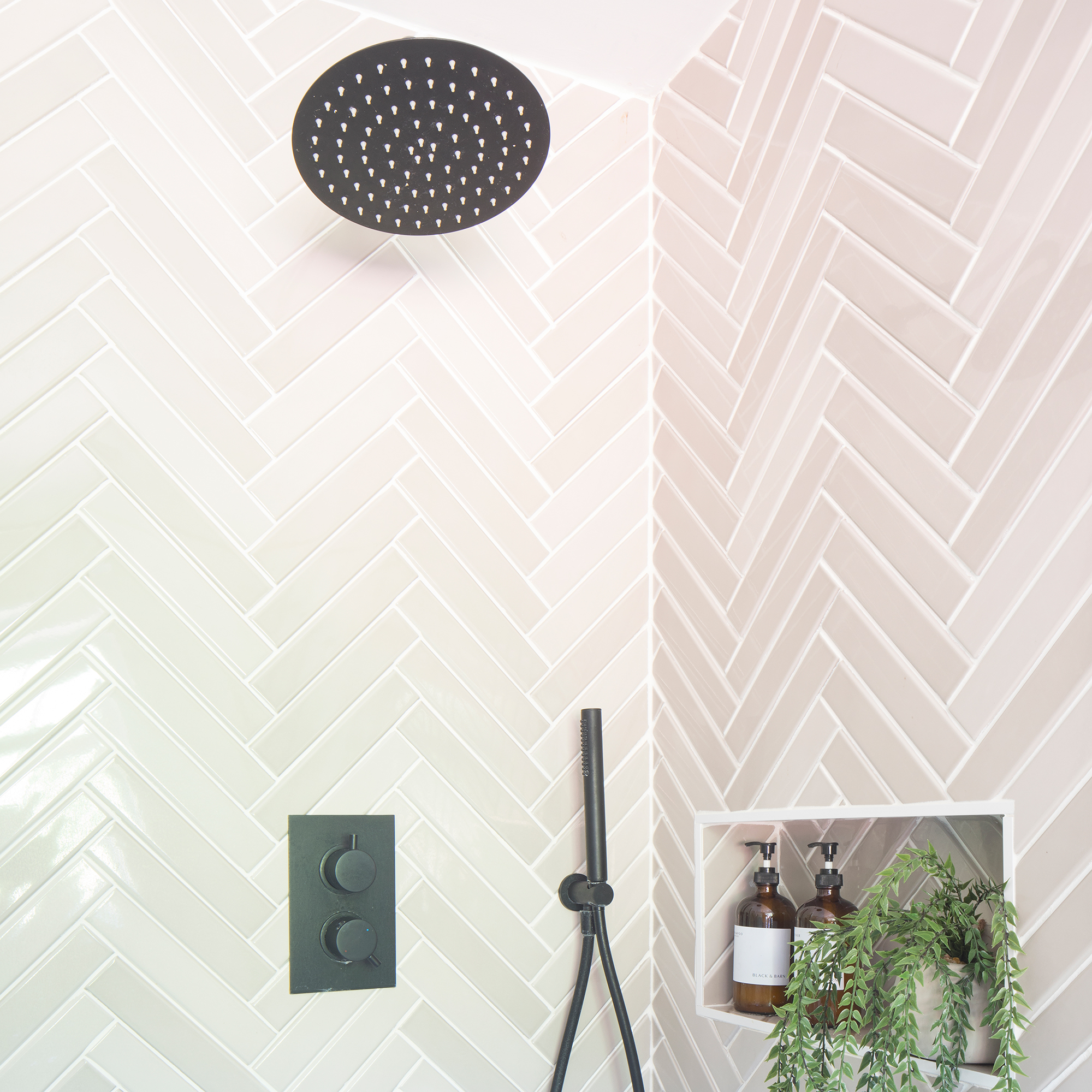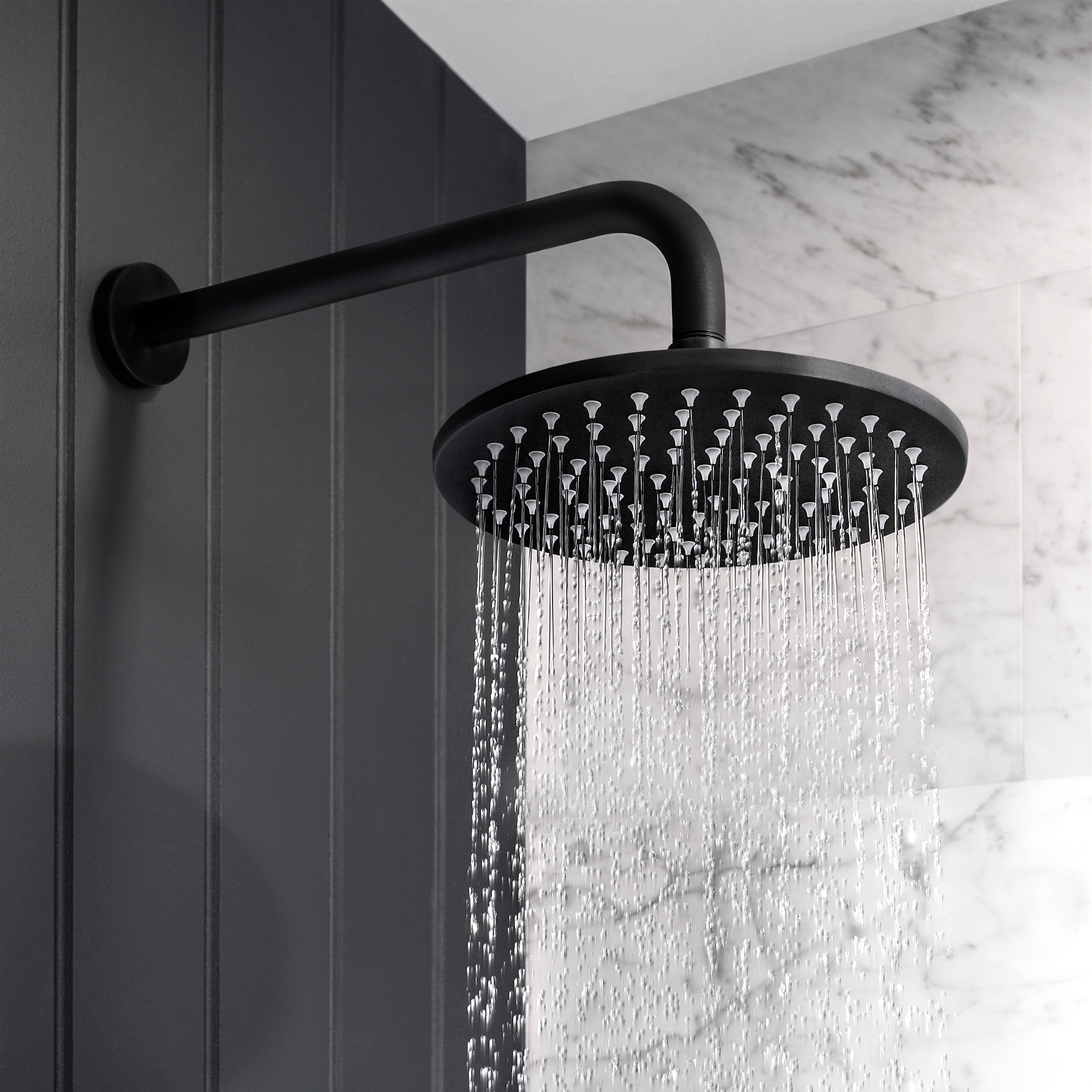How to fix water pressure - increase your shower's power with these simple steps
Low water pressure is far from ideal - here's how to fix it


Learning how to fix water pressure can be a real lifesaver, especially in the warmer months when we rely on refreshing showers to keep us cool. A soft trickle of water just doesn't cut it, and it's far more satisfying to step into a powerful stream at the beginning or end of the day.
The good news is that if your low water pressure is the result of an issue with your shower, you can probably fix it yourself. Our step-by-step will show you how to do this, so that you can increase your shower's water pressure without having to call a plumber out, saving you both time and money.

How to fix water pressure - step by step
It's important to note that if you're experiencing low water pressure throughout your house, the problem is likely to be related to your home and local water supply network’s infrastructure.
'This can be tricky to rectify on your own, so it’s worth contacting a qualified plumber if you think this is the nature of the issue you’re having,' explains James Roberts, Director at Sanctuary Bathrooms. 'They can advise on ways to get the most from your water supply and plumbing and may be able to install a pressure booster to your mains.'
If it's just the shower that's giving you issues though, you can follow the steps below to get your shower back to working in tip-top condition. Our guide gives a comprehensive overview of the most simple ways in which you can fix your water pressure, so keep reading so you can get back to enjoying your shower room ideas at their best.

1. Research any local water work first
It's a good idea to search local water-related incidents online to see how they may be affecting your pressure before you start trying to fix anything. 'Any water line repairs, pipe replacements, or maintenance could weaken your area's water supply', explains Rob Pearson, Network Operations Manager at Rightio.
If you find that your local water supplier is carrying out work, there will be little you can do to increase your water pressure until the work is completed. Come back to the following steps if the problem persists after the work is done.
Sign up to our newsletter for style inspiration, real homes, project and garden advice and shopping know-how
2. Locate your water valve

Your water valve or stopcock needs to be fully open for your shower to have maximum water pressure. This is usually located under the kitchen sink, but other common places are in the hallway, the downstairs toilet, or near your gas and electric meter. If you're still having trouble finding this, look into where is my stopcock before moving on to the next step.
3. Open the valve
Once you've located your water valve, check to see if it is fully open. The T-bar handle should be vertical and in line with the pipe. If it's turned slightly, this means that it's partially closed which is likely the cause of your low water pressure. Open the valve by turning it anti-clockwise so it's in line with the pipe again.
4. Clean the shower head

If after opening your water valve you're still experiencing low pressure, inspect your shower head by removing it from the hose and looking through it. '
Old showerheads can sometimes get past their best, with blockages or worn parts preventing proper water flow', says James from Sanctuary Bathrooms. Try soaking your shower head in white vinegar and water for half an hour, to help break down any scale that's built up.
5. Or, replace the shower head
If you've tried cleaning your shower head and the holes are still visibly clogged up, it's probably worth replacing it altogether. You can purchase a low-pressure shower head which is specifically designed to maximise water flow in homes that have low pressure.
Learning how to install a shower head is straightforward, and you should find that your water flows freely once you've attached a fresh alternative.

6. Consider upgrading your shower system
Some shower systems can give better pressure than others, so if your low pressure problem is proving to be a long-term one, it's worth considering upgrading to a new system.
An electric shower is more efficient at giving higher water pressure than a non-combi boiler system for example. 'An electric shower, fed from the rising main, gives an even water pressure and can be great teamed with a combi-boiler,' says bathroom expert James.
If you have a non-combi boiler, James recommends installing a power shower. 'These work by having a booster built into them, which increases your water pressure as it exits the shower head,' he explains.
What causes low water pressure in the home?
Low water pressure in the home can have both external and internal causes. 'The problem could have been caused by external factors such as water work being carried out in your neighbourhood or droughts,' explains Barrie Cutchie, Design Director at BC Designs.
If there aren't any issues occurring in your local area, one or multiple things in your home could be contributing to a decrease in water pressure, including dripping taps, a broken water valve, and clogged or leaking pipes. These things disrupt the flow of water and as well as decrease your water pressure when you turn a tap or shower on, which can be highly wasteful and expensive.
You can learn how to fix a dripping tap yourself, but Barrie recommends seeking professional help from a plumber if you think there's a problem with your pipes or water valve.

How do I increase water pressure in the home?
The quickest way to increase your water pressure is by making sure your water valve is fully open. If you can see that your stopcock is turned slightly, you know that this is probably causing the lack of power in your shower, so simply turn it anti-clockwise and you should notice a significant improvement.
It's also a good idea to fix any leaking taps, as these can contribute to low water pressure. Learn either how to fix a dripping tap yourself, or how to change a tap washer to solve this issue. Make sure your shower head is also nice and clean, as blockages in the holes disrupt the stream of water.
Another way to fix your water pressure is to invest in a booster pump. 'These are designed to increase water pressure by passing water into the pump from your mains supply and then ejecting it into your home water system at a higher pressure', explains bathroom expert Barrie. You will however need a plumber to install your booster pump safely, as they will need to insert a break tank to divide the pressure from the booster into multiple zones.
How do I check my water pressure?
If you think something’s wrong with your water pressure, it’s fairly easy to check what’s going on. You'll first need to turn all taps and water appliances off (dishwashers, washing machines etc.), before turning one of your taps on.
Hold a large measuring jug under your tap for six seconds, using a timer to be precise. Then multiply the amount of water you've collected by 10 to get your flow rate in litres per minute. So if for example, you collected 0.8l of water in six seconds, your water flow rate will be eight litres per minute.
'If you’re getting less than 10 litres per minute, there’s a lot of room for improvement', says Barrie from BC Designs. 'Water flow around the 15 litres per minute mark is considered good.'

Katie has been writing freelance since early 2022, specialising in all things homes and gardens, following achieving a Masters in Media and Journalism. She started out writing e-commerce content for several of Future’s interior titles, including Real Homes, Gardeningetc, Livingetc, and Homes and Gardens. Since then she’s been a regular contributor on Ideal Home’s digital team, covering news topics, how-to guides, and product reviews.